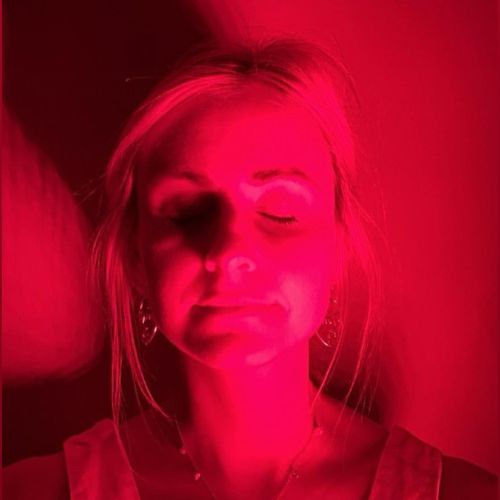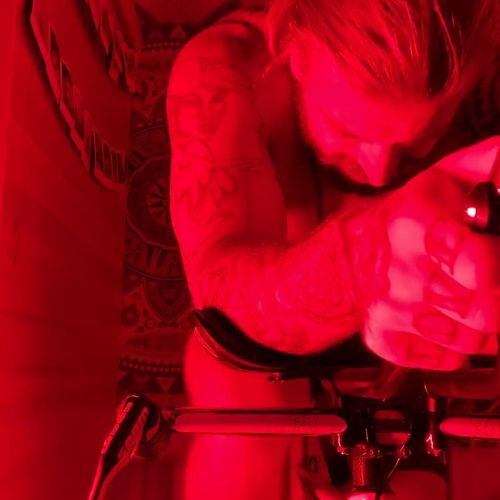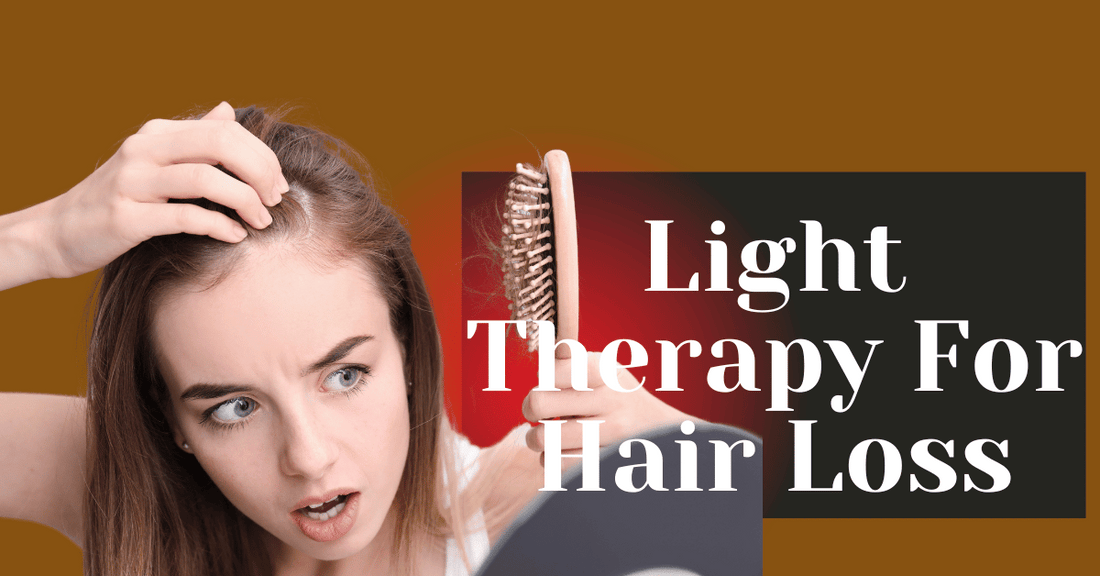
Light Therapy For Hair Loss
Hair loss is a common concern that affects millions of people worldwide, impacting individuals of all ages, genders, and backgrounds. The emotional and psychological effects of hair loss can be profound, regardless of the kind of hair loss—bald patches, receding hairlines, or thinning hair.
Fortunately, advancements in medical technology have led to the development of various treatments, including light therapy, which offers hope for those seeking to restore their lost hair and confidence.
Addressing hair loss goes beyond mere aesthetics; it can profoundly impact self-esteem, social interactions, and overall quality of life. Many individuals experiencing hair loss may feel self-conscious or embarrassed, leading to a loss of confidence and a diminished sense of self-worth.
Moreover, hair loss can be a symptom of underlying health issues or hormonal imbalances, making it crucial to address the root cause rather than merely treating the symptoms.
In this comprehensive guide, we will delve into the world of light therapy for hair loss, exploring its mechanisms, benefits, and effectiveness.
From understanding the science behind light therapy to practical tips for incorporating it into your hair care routine, we will cover everything you need to know to make informed decisions about addressing hair loss with light therapy.
So whether you're struggling with thinning hair or simply curious about the latest advancements in hair restoration technology, join us as we embark on this journey to healthier, fuller hair.
Understanding Hair Loss
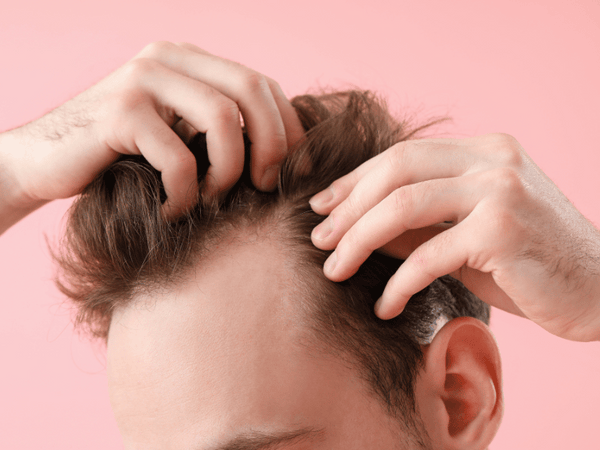
Hair loss, also known as alopecia, can occur for various reasons and manifest in different forms, from gradual, thinning hair to sudden shedding. Understanding the types and causes of hair loss is crucial for determining the most effective treatment approach. Here are some key insights into hair loss:
1. Types of hair loss:
-
Androgenetic Alopecia: Known as male or female pattern baldness, this is the most prevalent kind of hair loss. It is inherited and usually gets worse as people get older.
-
Telogen Effluvium: This type of hair loss is characterized by a sudden and temporary shedding of hair, often triggered by stress, illness, or hormonal changes.
-
Alopecia Areata: an autoimmune disease that results in patches of hair loss on the brows, scalp, and other body areas.
-
Scarring Alopecia: A form of hair loss that results in scarring of the hair follicles, preventing hair regrowth.
2. Causes of Hair Loss:
-
Genetics: Family history plays a significant role in determining the likelihood of experiencing hair loss.
-
Hormonal Changes: Imbalances in hormones, such as dihydrotestosterone (DHT), can contribute to hair loss.
-
Stress: Physical or emotional stress can lead to a condition known as telogen effluvium, causing hair to shed prematurely.
-
Medical Conditions: Certain medical conditions, such as thyroid disorders and autoimmune diseases, can contribute to hair loss.
-
Dietary Factors: Nutritional deficiencies, particularly in iron and protein, can affect hair health and contribute to hair loss.
3. Statistics on Hair Loss Prevalence:
-
The American Academy of Dermatology estimates that 80 million men and women in the country suffer from hair loss in one way or another.
-
By the age of 50, approximately 50% of men and 25% of women will experience significant hair loss.
Traditional Treatments for Hair Loss

While light therapy is a relatively new approach to treating hair loss, several traditional treatments have been used for years to address this common concern. Understanding these conventional treatments can provide valuable insights into the effectiveness and limitations of different approaches. Here are some of the most common traditional treatments for hair loss:
1. Medications:
-
Minoxidil (Rogaine): A topical medication applied to the scalp, minoxidil is believed to increase blood flow to the hair follicles and stimulate hair growth. It is available over-the-counter and is often used to treat male and female pattern baldness.
-
Finasteride (Propecia): A prescription medication taken orally, finasteride is believed to inhibit the production of dihydrotestosterone (DHT), a hormone that contributes to hair loss. It is primarily used to treat male pattern baldness.
2. Hair Transplant Surgery:
-
Hair follicles from a donor area—typically the back or sides of the head—are transplanted to the balding or thinning areas during hair transplant surgery.. This surgical procedure is typically used to treat male pattern baldness and can provide long-lasting results.
3. Topical Treatments and Shampoos:
-
Various topical treatments and shampoos claim to promote hair growth and improve the health of the scalp. These products often contain ingredients such as ketoconazole, caffeine, and biotin, which are believed to nourish the hair follicles and stimulate growth.
While these traditional treatments can be effective for some individuals, they are not without their limitations. Medications may need to be used indefinitely to maintain results, and hair transplant surgery can be costly and invasive. Additionally, some individuals may experience side effects from these treatments.
Introduction to Light Therapy

Light therapy is a non-invasive treatment that stimulates cellular activity and promotes healing using particular light wavelengths. It is sometimes referred to as phototherapy or photobiomodulation. In the context of hair loss, light therapy is believed to stimulate hair follicles, increase blood flow to the scalp, and promote more hair follicle growth. Here are some key aspects of light therapy for hair loss:
1. How Does Light Therapy Work for Hair Loss?
-
Light therapy is thought to work by stimulating the production of adenosine triphosphate (ATP), which is the energy source for cells. This increased energy production is believed to promote cellular activity in the hair follicles, leading to improved hair growth.
-
Light therapy may also help to reduce inflammation in the scalp, which can contribute to hair loss.
2. Types of Light Therapy for Hair Loss:
-
Low-Level Laser Therapy (LLLT): LLLT uses low-level lasers or light-emitting diodes (LEDs) to deliver specific wavelengths of light to the scalp. These devices are designed to be safe and painless, and are often used as a non-invasive treatment for hair loss.
-
Red Light Therapy: Red light therapy uses specific wavelengths of red light to penetrate the scalp and stimulate hair follicles. This type of therapy is believed to increase circulation, reduce inflammation, and promote hair growth.
3. Scientific Evidence Supporting Light Therapy for Hair Loss:
-
Several studies have investigated the effectiveness of light therapy for hair loss, with many showing positive results. For example, a 2014 study published in the "Lasers in Surgery and Medicine" journal found that LLLT significantly improved hair counts in men with androgenetic alopecia.
-
While more research is needed to fully understand the mechanisms of action and optimal treatment protocols, the existing evidence suggests that light therapy may be a promising treatment for hair loss.
Types of Light Therapy for Hair Loss
Light therapy for hair loss encompasses several approaches, each utilizing different technologies and wavelengths of light. Understanding the various types of red light therapy and laser therapy used can help you choose the most suitable option for your needs. Here are the main types of light therapy used for hair loss:
1. Low-Level Laser Therapy (LLLT):
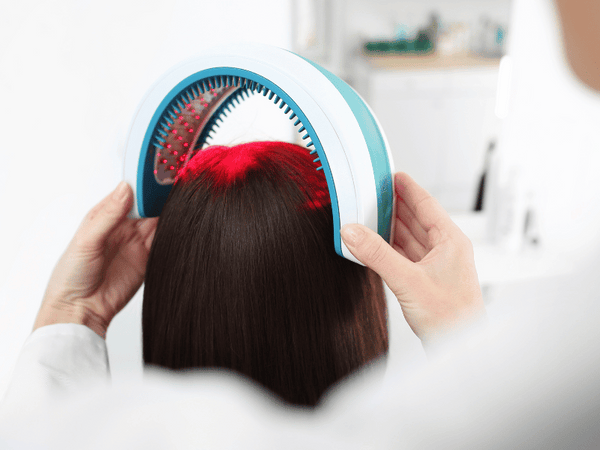
-
LLLT devices emit a specific wavelength of light (typically in the red or near-infrared spectrum) that is believed to stimulate hair follicles and promote hair growth.
-
These devices are available in various forms, including handheld devices for home use and larger devices used in clinical settings.
-
LLLT is non-invasive, painless, and does not require any downtime, making it a convenient option for many individuals.
2. Light-Emitting Diode (LED) Therapy:

-
LED therapy utilizes light-emitting diodes to deliver specific wavelengths of light to the scalp.
-
Like LLLT, LED therapy is non-invasive and painless, making it suitable for home use.
-
LED therapy is often used in conjunction with other hair loss treatments to enhance results.
3. Red Light Therapy:
-
Red light therapy uses specific wavelengths of red light to penetrate the skin and stimulate hair follicles.
-
This type of therapy is believed to increase blood flow to the scalp, reduce inflammation, and promote hair growth.
-
Red light therapy is often used in combination with other therapies for hair loss, such as minoxidil or finasteride.
4. Combination Therapy:
-
Some devices combine different types of light therapy, such as LLLT and LED therapy, to enhance the overall effectiveness of the treatment.
-
Combination therapy may offer synergistic benefits, providing a more comprehensive approach to treating hair loss.
How Light Therapy Stimulates Hair Growth
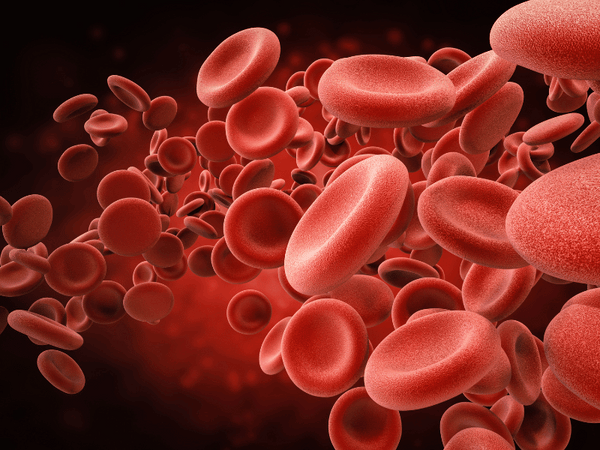
Understanding how light therapy stimulates hair growth can provide insights into its effectiveness and potential benefits for individuals experiencing hair loss. Here's how light therapy is believed to promote new hair growth itself:
1. Increased Blood Flow to the Scalp:
-
Light therapy is thought to improve blood circulation in the scalp, which can deliver essential nutrients and oxygen to the hair follicles. This improved circulation can help stimulate hair growth and improve hair health.
2. Stimulation of Hair Follicles:
-
The specific wavelengths of light used in light therapy are believed to penetrate the scalp and stimulate the hair follicles at a cellular level. This stimulation can increase the production of hair cells and promote the growth of new hair.
3. Reduction of Inflammation:
-
Inflammation in the scalp can contribute to hair loss by damaging hair follicles. Light therapy is believed to help reduce inflammation, creating a more conducive environment for hair growth.
4. Activation of Cellular Metabolism:
-
Light therapy is thought to increase the production of adenosine triphosphate (ATP), which is the energy source for cells. This increased cellular metabolism can promote hair growth and improve the overall health of the hair follicles.
5. Lengthening of the Anagen Phase:
-
The anagen phase is the active growth phase of the hair follicles. Light therapy is believed to lengthen the duration of the anagen phase, leading to increased hair growth and thicker, healthier hair.
Benefits of Light Therapy for Hair Loss
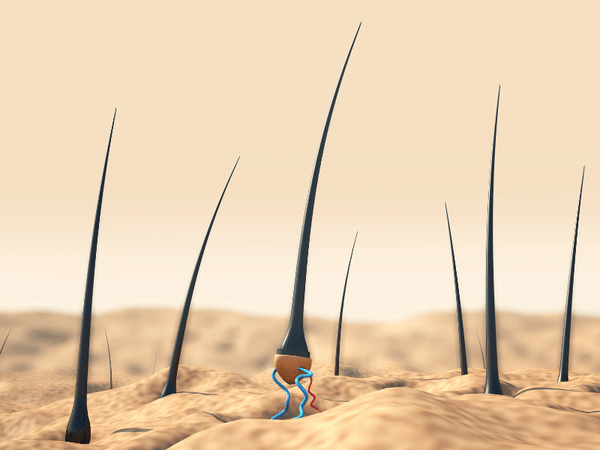
Light therapy offers several potential benefits for individuals experiencing hair loss, making it an attractive treatment option for many. Here are some of the key benefits of light therapy for hair loss:
1. Non-Invasive and Painless:
-
Light therapy is a non-invasive treatment that does not require surgery or needles. It is painless and typically does not cause any discomfort during or after treatment.
2. Promotes natural hair growth:
-
Unlike some medications or treatments that may have side effects, light therapy is believed to promote natural hair growth by stimulating the hair follicles without the use of chemicals.
3. Safe for long-term use:
-
Light therapy is considered safe for long-term use, making it a suitable option for individuals looking for a sustainable solution to hair loss.
4. Improves Hair Density and Thickness:
-
Light therapy is believed to improve the density and thickness of hair by stimulating the hair follicles and promoting the growth of new, healthy hair.
5. Enhances hair health:
-
In addition to promoting hair growth, light therapy is thought to improve the overall health of the hair, making it stronger, shinier, and more resilient to damage.
6. Convenient and Easy to Use:
-
Many light therapy devices are designed for home use, making treatment convenient and accessible. These devices are typically easy to use and require a minimal time commitment.
7. Complements to Other Hair Loss Treatments:
-
Light therapy can be used in conjunction with other hair loss treatments, such as medications or topical solutions, to enhance results and improve overall hair health.
Using Light Therapy for Hair Loss
Incorporating light therapy into your hair care routine can be a simple and effective way to promote new hair growth and improve the health of your hair follicles. Here are some practical tips for using light therapy for hair loss:
1. Choose the right device:
There are various light therapy devices available on the market for female pattern hair loss, including handheld devices for home use and larger devices used in clinical settings. Choose a device that is FDA-cleared for treating female pattern hair loss and has positive reviews from users.
2. Follow the Recommended Treatment Protocol:
Most laser therapy and light therapy devices come with a recommended treatment protocol, including the frequency, low-level laser light therapy, and duration of treatment sessions. Follow these guidelines closely for optimal results.
3. Use the device consistently.
Consistency is key when using light therapy for hair loss. Aim to use the device as directed, whether it's daily or several times per week, to achieve the best results.
4. Apply the device to the scale.
When using a handheld device, apply visible light from the device directly to thick hair on the scalp, ensuring that the light penetrates the thick hair follicles. Move the device slowly across the scalp to cover the hair cycle and the entire treatment area.
5. Combine light therapy with other treatments:
Light therapy can be used in conjunction with other hair loss treatments, such as minoxidil or finasteride, to enhance results. Consult with a healthcare professional or dermatologist to determine red light therapy or the best combination of treatments for your individual needs.
6. Monitor Your Progress:
Keep track of your own own hair density and shaft growth progress while using light therapy. Take photos regularly to document hair growth cycle and any changes in your hair shaft density or thickness.
7. Be patient and persistent.
Results from red light therapy device may not be immediate, and it may take several months to see noticeable improvements in hair growth. Be patient and continue using the red light therapy device as directed for the best results.
Potential Side Effects of Light Therapy for Hair Loss
While light therapy is generally considered safe and well-tolerated, there are some potential side effects to be aware of. It's essential to understand these potential side effects and how to mitigate them when using low level light therapy for hair loss. Here are some common side effects associated with laser therapy for low level light therapy and cold laser therapy only:
1. Scalp Irritation:
Some individuals may experience mild scalp irritation, redness, or itching after using a light therapy device. This is usually temporary and resolves on its own.
2. Dryness or flakiness:
Light therapy can sometimes cause dryness or flakiness of the scalp. Using a moisturizing shampoo or scalp treatment can help alleviate these symptoms.
3. Hair Shedding:
In some cases, light therapy may initially cause an increase in hair shedding. This is known as the "shedding phase" and is a normal part of the hair growth cycle. New hair growth should follow this shedding phase.
4. Eye Strain or Discomfort:
When using a light therapy device, it's essential to avoid direct exposure to the eyes. Prolonged exposure to bright light can cause eye strain or discomfort. Use protective eyewear if necessary.
5. Headache or dizziness:
Some individuals may experience headaches or dizziness during or after light therapy sessions. If these symptoms persist, discontinue use and consult a healthcare professional.
6. Skin Sensitivity:
Individuals with sensitive skin may experience increased sensitivity to light therapy. It's essential to monitor your skin's reaction and adjust the treatment intensity if needed.
7. Hair color changes:
In rare cases, light therapy may cause temporary changes in hair color, particularly in individuals with light-colored hair. This is usually temporary and resolves once treatment is discontinued.
Frequently Asked Questions (FAQs)
1. Is light therapy safe for hair loss?
Yes, light therapy is considered safe for hair loss and is non-invasive. However, it's essential to follow the manufacturer's instructions and consult with a healthcare professional before starting treatment.
2. How long does it take to see results from light therapy for hair loss?
Results vary from person to person, but most individuals start to see improvements in hair growth and thickness after several months of consistent use.
3. Can light therapy be used for laser hair growth in conjunction with other such laser hair growth device or loss treatments?
Yes, light therapy can be used in combination with other hair loss treatments, such as minoxidil or finasteride, to enhance results.
4. Are there any side effects of light therapy for laser hair growth or loss?
Some individuals may experience mild scalp irritation, dryness, or hair shedding. These side effects are usually temporary and resolve on their own.
5. How often should I use a light therapy device for hair loss?
The frequency of use depends on the specific device and treatment protocol. Most devices recommend using them several times per week for optimal results.
6. Can light therapy help with other scalp conditions, such as dandruff or psoriasis?
Light therapy has been shown to have beneficial effects on various scalp conditions, including dandruff and psoriasis. However, it's essential to consult with a healthcare professional for personalized treatment recommendations.
7. Is light therapy suitable for all types early stages of hair loss?
Light therapy is most effective for individuals with androgenetic alopecia (male or female pattern baldness). It may be less effective for other types of hair loss, such as alopecia areata.
8. Can I use light therapy if I have colored or chemically treated hair?
Yes, light therapy is safe to use on colored or chemically treated hair. But it's crucial to adhere to the manufacturer's recommendations and seek medical advice if you have any concerns.
Conclusion
In conclusion, light therapy offers a promising and non-invasive treatment option for individuals experiencing hair loss. By stimulating hair follicles, increasing blood flow to the scalp, and promoting cellular activity in thicker hair and the hair follicle itself, light therapy can help improve both hair follicle growth and overall hair health.
While results may vary from person to person, many individuals have reported positive outcomes from using light therapy for hair loss. It's essential to choose a high-quality light therapy device, follow the recommended treatment protocol, and be patient with the results.
If you're considering light therapy for hair loss, consult with a healthcare professional or dermatologist to determine the most suitable treatment option for your individual needs. With consistent use and proper care, light therapy can be an effective tool for promoting healthy hair growth, and restoring confidence.
